22 Historic European Cafés You Need To Visit
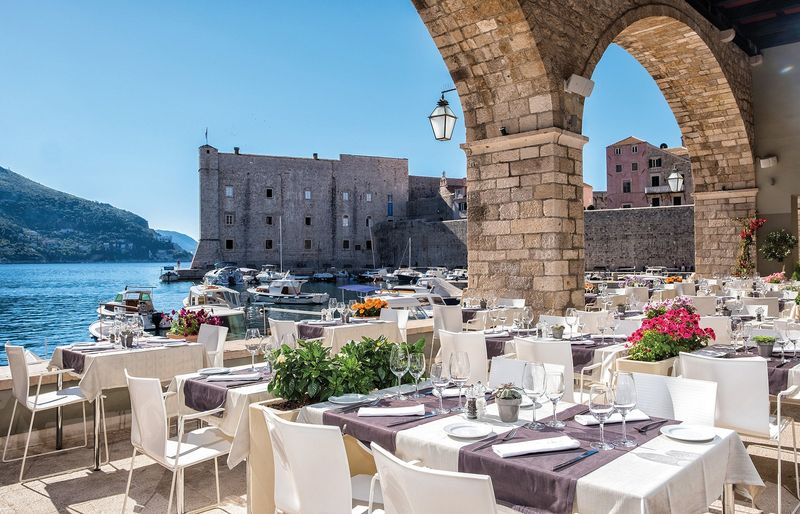
Europe’s historic cafés are more than just places to sip coffee – they’re cultural landmarks where art movements were born and revolutions planned. These enchanting establishments have hosted famous writers, artists, and intellectuals for centuries, creating spaces where ideas flourished and history unfolded.
From ornate Viennese coffee houses to cozy Parisian hangouts, these cafés offer a unique window into Europe’s rich cultural heritage.
1. Café De Flore – Paris
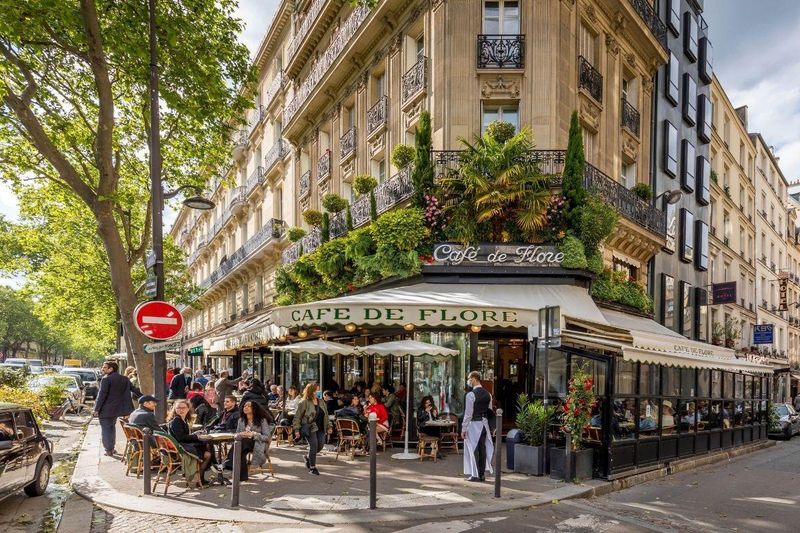
Intellectual giants once gathered at this legendary spot on Boulevard Saint-Germain to debate existentialism and literary theory. Café de Flore became the unofficial headquarters for thinkers like Jean-Paul Sartre and Simone de Beauvoir during the mid-20th century.
The classic Art Deco interior remains largely unchanged since the 1930s, allowing visitors to step back in time. Enjoy a coffee at the same tables where countless literary masterpieces were conceived.
2. Café Central – Vienna
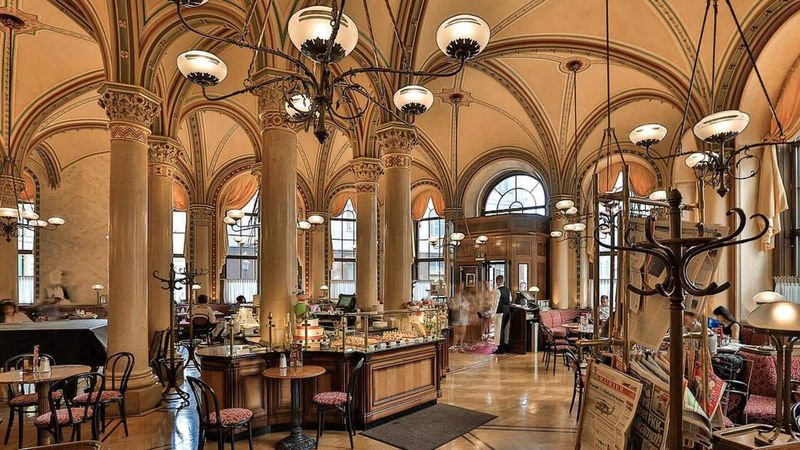
Marble columns and vaulted ceilings create an atmosphere of imperial grandeur at this cornerstone of Viennese coffee culture. Café Central once welcomed revolutionary thinkers like Leon Trotsky and Sigmund Freud through its palatial doors.
Piano melodies complement the clinking of fine china in this living museum. The café’s legendary pastry selection, particularly the decadent chocolate tortes, offers the perfect accompaniment to their meticulously prepared coffee.
3. Café Sacher – Vienna
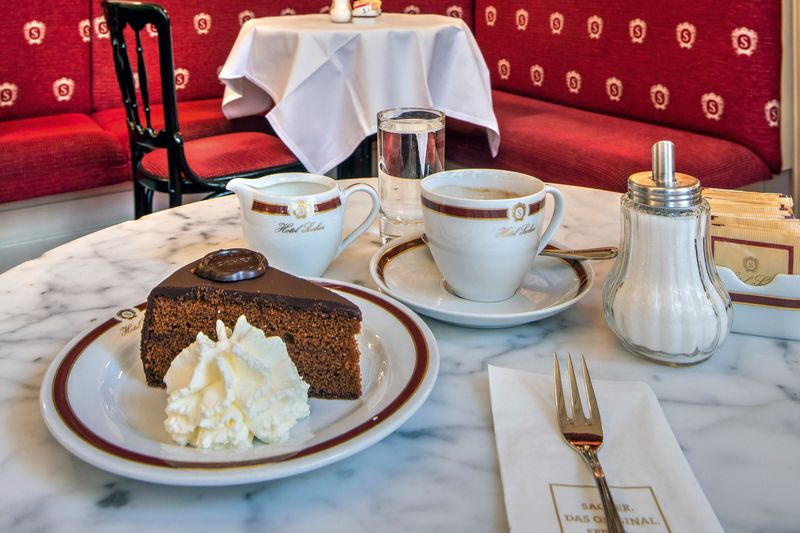
Chocolate lovers make pilgrimages to this refined establishment near the Opera House. The café’s legendary creation – a rich chocolate cake with apricot jam and dark chocolate glaze – has been served since 1832.
Café Sacher embodies Viennese elegance with its red upholstery and attentive waitstaff in formal attire. The time-honored ritual of enjoying Sachertorte with unsweetened whipped cream and a perfectly prepared mélange coffee remains unchanged for generations.
4. Café Sperl – Vienna
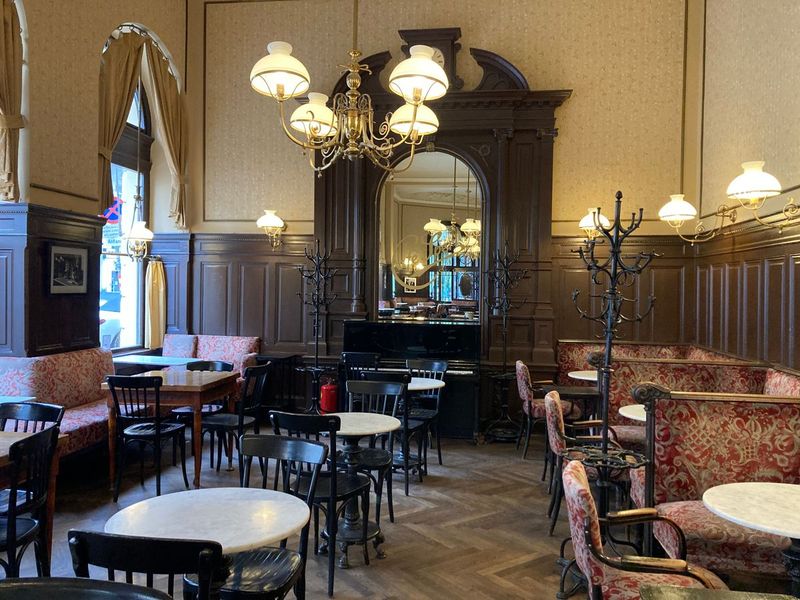
Time seems suspended beneath the billowing smoke-stained ceiling of this quintessential Viennese institution. Founded in 1880, Café Sperl preserves authentic coffee house traditions with its worn velvet banquettes and marble-topped tables.
Newspapers still hang on wooden rods as they did when artists and military officers mingled here. The billiard room and original Thonet chairs create an atmosphere that earned Café Sperl appearances in several films about Vienna’s golden age.
5. Caffè Florian – Venice

Orchestra music drifts across St. Mark’s Square from the oldest continuously operating coffee house in Europe. Since 1720, visitors have admired the ornate mirrors, frescoed walls, and gilded decorations while watching Venice’s carnival of life unfold.
Caffè Florian has served everyone from Casanova to Charles Dickens. The sumptuous interior rooms, each with unique artistic themes, provide shelter during acqua alta flooding, while the terrace offers prime people-watching during pleasant weather.
6. Antico Caffè Greco – Rome

Literary giants gathered amid the red velvet and gilded mirrors of this 18th-century institution on Via Condotti. Established in 1760, the historic meeting place has hosted luminaries from Lord Byron to Hans Christian Andersen.
Antico Caffè Greco houses an impressive collection of artwork across multiple rooms. Marble-topped tables and antique chairs fill the narrow space where intellectuals still debate over espresso, continuing centuries of cultural conversation just steps from the Spanish Steps.
7. Caffè Pedrocchi – Padua
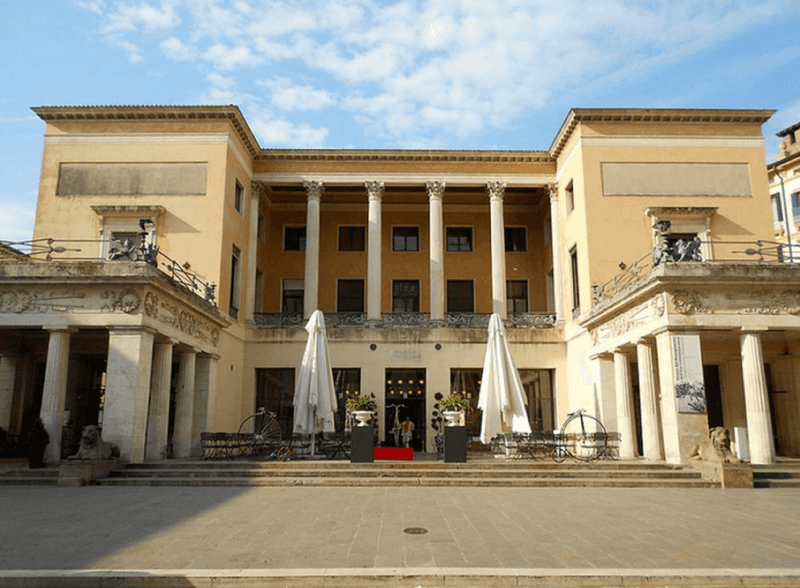
Nicknamed “the café without doors” because it historically remained open day and night, this neoclassical landmark served as the intellectual heart of a university city. Students planned revolutionary activities here during Italy’s tumultuous Risorgimento period.
Caffè Pedrocchi features distinctive colored rooms – green, white and red – representing the Italian flag. The upper floor houses a fascinating museum documenting the café’s central role in local history, while downstairs patrons enjoy the signature mint-green coffee drink.
8. Café Luitpold – Munich
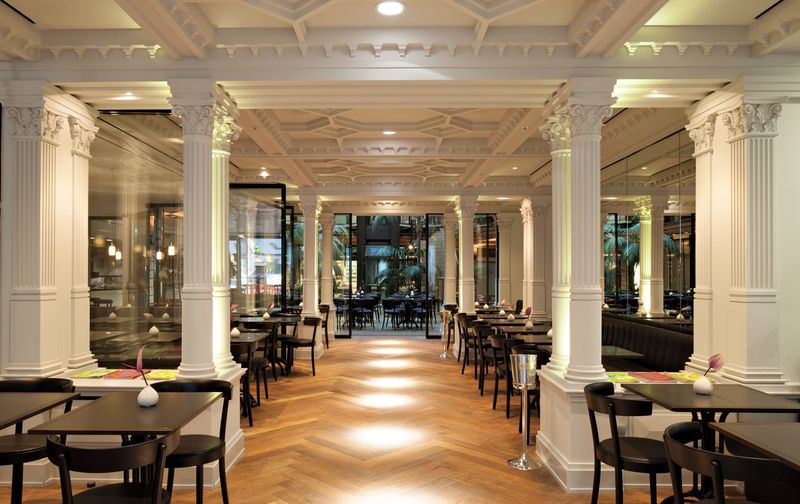
Artistic innovation flourishes in this grand café that once hosted avant-garde exhibitions shocking to early 20th-century sensibilities. The magnificent chandeliers illuminate a space where Wassily Kandinsky and other Blue Rider movement artists gathered.
Café Luitpold maintains its reputation for exceptional pastry artistry. The in-house confectionery produces intricate cakes and chocolates displayed like museum pieces. Classical music performances complement weekend brunches, continuing the café’s tradition of cultural enrichment.
9. Gerbeaud Café – Budapest
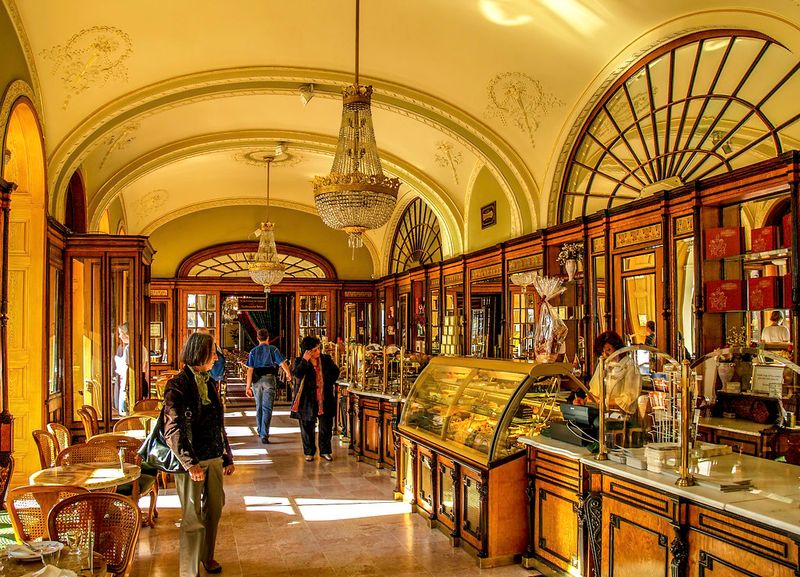
Sweet temptations fill glass display cases in this confectionery paradise established in 1858. The institution’s signature slice – layers of ground walnuts and apricot jam between delicate pastry – remains unchanged since Swiss-Hungarian patissier Emil Gerbeaud perfected it.
The café occupies a prime position on Vörösmarty Square in Pest. Antique chandeliers illuminate the spacious interior where Hungarian nobility once gathered. Summer brings crowds to the outdoor terrace, while winter sees locals seeking shelter in the wood-paneled salon.
10. Majestic Café – Porto
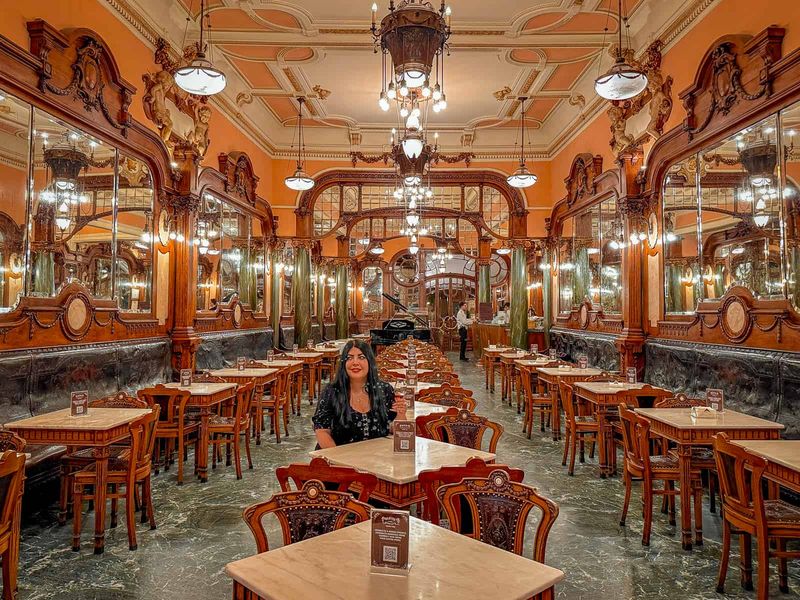
Belle Époque splendor awaits beneath the carved wooden ceiling of northern Portugal’s most elegant meeting place. Leather chairs, crystal chandeliers, and large mirrors create a refined atmosphere where Porto’s intellectuals have gathered since 1921.
Majestic Café reportedly inspired J.K. Rowling during her time living in Porto. The café’s façade features elaborate Art Nouveau details, while inside, white-jacketed waiters serve traditional Portuguese pastries on silver trays. Live piano performances enhance the sophisticated ambiance on weekend afternoons.
11. Café Iruña – Pamplona
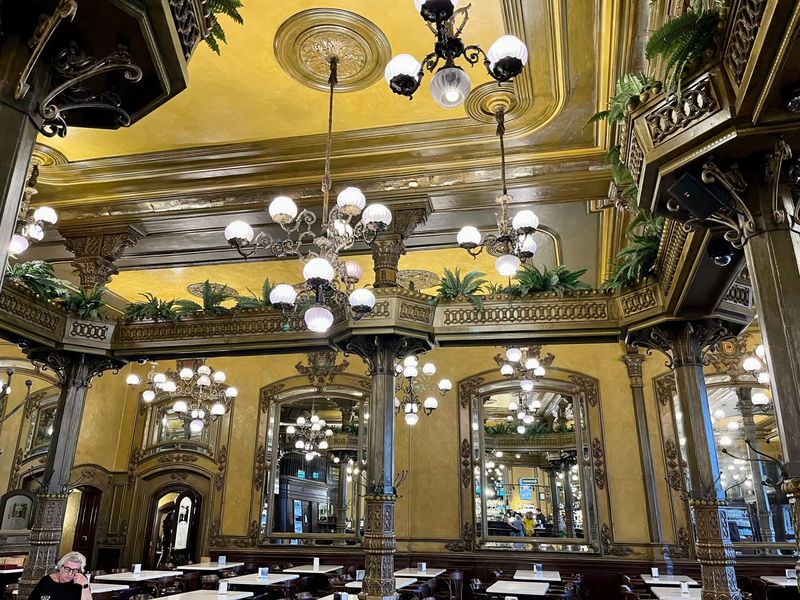
Moorish arches and intricate tilework transport visitors to another era in this century-old gathering place. Established in 1888, the ornate interior preserves the Belle Époque atmosphere that captivated Ernest Hemingway during his visits to the Running of the Bulls.
Café Iruña occupies a prime corner of Plaza del Castillo in Pamplona’s historic center. A life-sized statue of Hemingway leans against the bar where he once drank. The café still fills with excitement during San Fermín festival, though it offers a charming experience year-round.
12. Café Du Grütli – Geneva
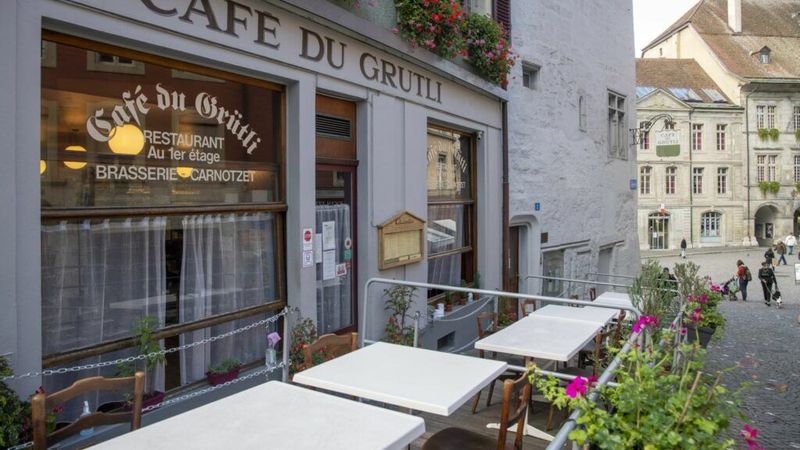
Revolutionary spirit lives on in this rustic establishment named after Switzerland’s founding document. Dating to the early 19th century, the Café du Grütli served as a meeting place for political activists and intellectuals plotting liberal reforms.
It maintains its traditional Swiss character with wooden beams and a cozy interior. Located in Geneva’s Old Town, it serves hearty fondue and local wines in an atmosphere little changed from when political exiles found refuge here. The outdoor terrace offers views of the city’s historic quarters.
13. Café Schober – Zurich
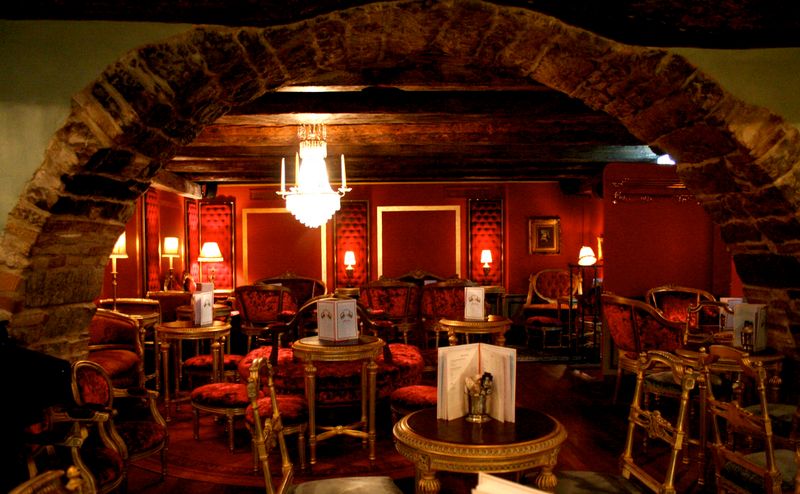
Sweet indulgence awaits in this multi-level wonderland of confectionery delights housed in a medieval building. Founded by Austrian confectioner Theodor Schober in 1842, the establishment has grown into a labyrinth of rooms each with distinct character.
Café Schober (now officially Conditorei Péclard) specializes in decadent hot chocolate and handmade truffles. The rococo salon with its red velvet upholstery offers a different experience than the garden room or the library nook. Zurich residents particularly treasure its Christmas decoration displays.
14. Café Slavia – Prague
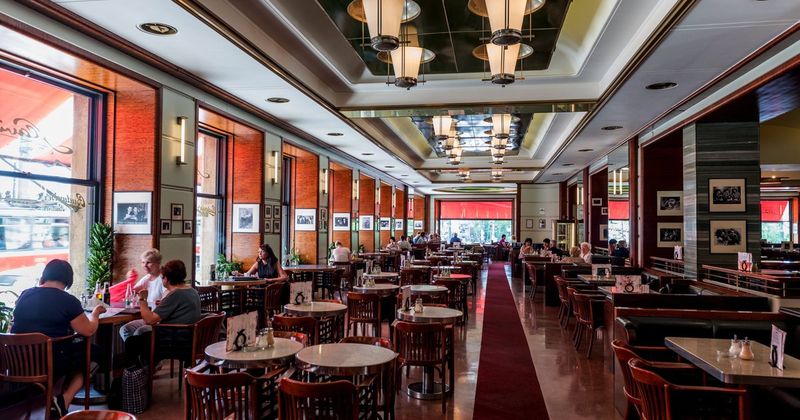
Sweeping views of Prague Castle and the Vltava River enhance philosophical conversations at this cornerstone of Czech intellectual life. Founded in 1884, the spacious Art Deco interior of Café Slavia witnessed dissident meetings during the Communist era.
It served as playwright Václav Havel’s unofficial office before he became president. The café’s large windows frame postcard-perfect views of the National Theater across the street. Piano music accompanies afternoon coffee service, while evenings bring literary gatherings continuing centuries of cultural discourse.
15. Café Metropole – Brussels

Banking history meets café culture in this opulent space originally designed as headquarters for a financial institution. Converted into a luxury hotel in 1894, the café’s high ceilings, marble columns, and stained glass windows showcase Belgium’s Belle Époque prosperity.
Café Metropole serves afternoon tea on silver trays beneath elaborate chandeliers. The building’s façade features whimsical Art Nouveau details including stone salamanders and wrought iron flourishes. Inside, padded banquettes and gilded mirrors create an atmosphere of refined indulgence.
16. Kafeneio Oraia Ellas – Athens

Authentic Greek coffee culture thrives in this traditional establishment hidden in Athens’ historic Monastiraki district. Dating to the 1800s, the Kafeneio Oraia Ellas preserves the genuine kafeneio experience with simple wooden tables, vintage photographs, and traditional décor.
The place serves coffee prepared in copper briki pots the traditional way – heated slowly in hot sand. Greek men still gather to play backgammon and discuss politics over tiny cups of strong coffee. The outdoor seating area offers glimpses of daily Athenian life unfolding against ancient backdrops.
17. Café Americain – Amsterdam
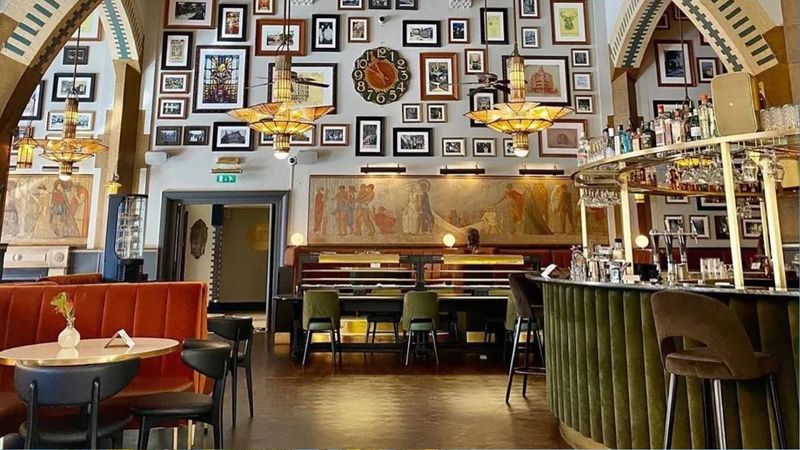
Art Deco magnificence surrounds guests in this architectural treasure inside the Amsterdam American Hotel. Opened in 1902, the café features spectacular stained glass windows, intricate wood carvings, and colorful tile work celebrating Dutch maritime heritage.
Café Americain became a gathering place for journalists due to its proximity to major newspaper offices. Brass lamps cast warm light over leather booths where creative conversations still flourish. The café’s brasserie menu combines Dutch classics with international favorites, attracting a cosmopolitan crowd.
18. Gradska Kavana Arsenal – Dubrovnik

Medieval stone walls frame magnificent sea views at this sophisticated gathering place inside Dubrovnik’s historic arsenal building. Dating back centuries, the renovated café occupies space where ships were once built and repaired within the ancient city walls.
Gradska Kavana Arsenal combines historic architecture with contemporary comfort. The terrace overlooks the old harbor where fishing boats bob alongside luxury yachts. Inside, elegant furnishings complement the exposed stone walls where locals and visitors alike enjoy Croatian pastries and coffee with Adriatic vistas.
19. Café Bristol – Warsaw
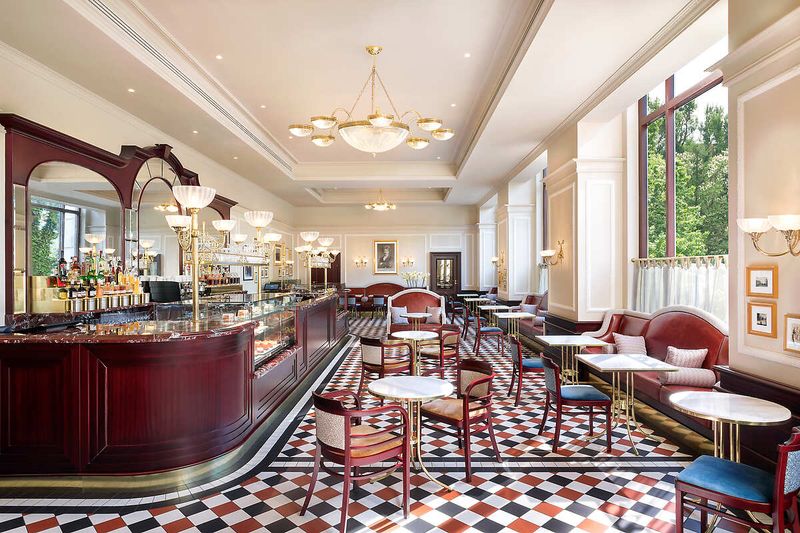
Art Nouveau elegance survived Warsaw’s wartime destruction in this meticulously reconstructed landmark connected to the historic Bristol Hotel. Crystal chandeliers illuminate the stylish interior where Poland’s intellectual and political elite have gathered since 1901.
Its famous patrons included pianist Arthur Rubinstein and dancer Isadora Duncan. The café’s signature chocolate pralines and tortes are still made using original recipes. Afternoon piano performances complement the refined atmosphere where waiters in formal attire serve tea in silver pots.
20. Casa Capșa – Bucharest
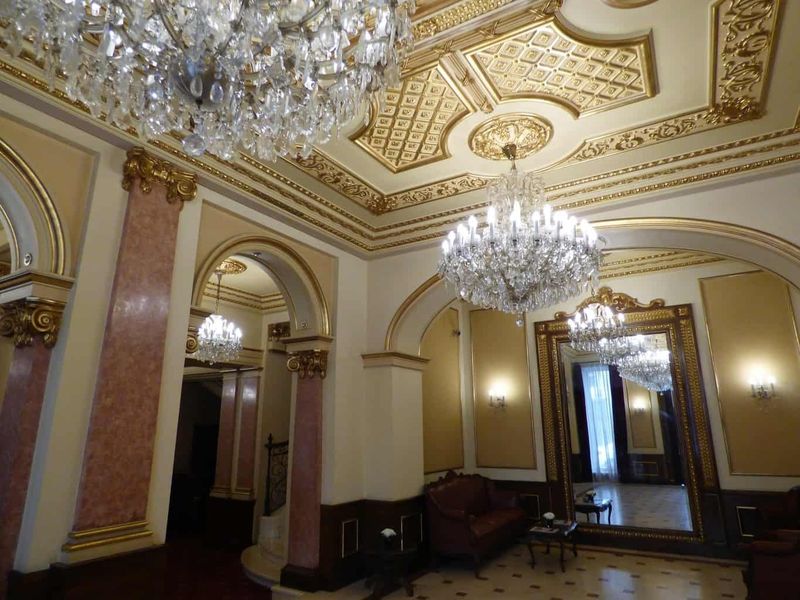
Political intrigue and literary discourse shaped Romania’s destiny at this legendary meeting place for the country’s elite. Established in 1852 by Grigore Capșa after studying confectionery in Paris, the café became Romania’s premier gathering spot for intellectuals and royalty.
Casa Capșa survived communist nationalization and has been restored to its former glory. The ornate interior features crystal chandeliers, red velvet furnishings, and gilded mirrors. Their famous chocolate cakes and pastries remain popular with Bucharest residents seeking a taste of pre-communist Romanian elegance.
21. Caffè Torino – Turin
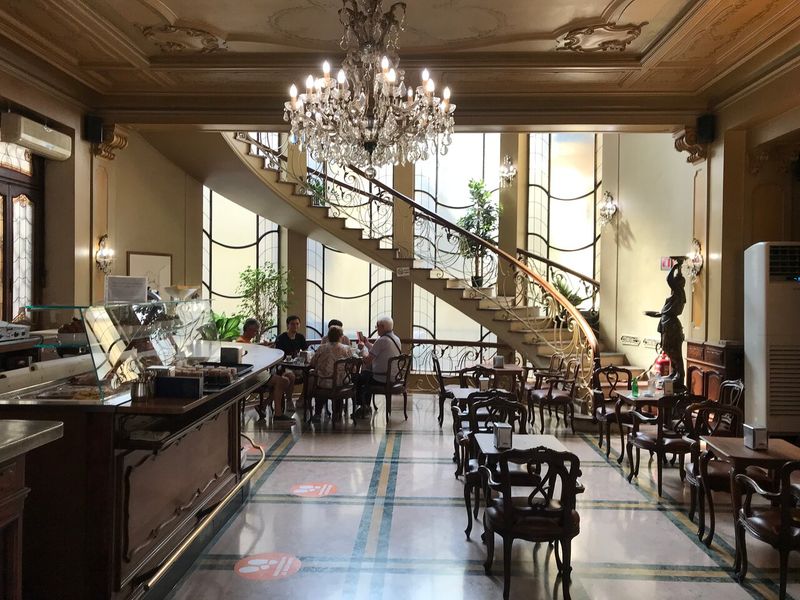
Golden bull mosaics bring good luck to visitors who step on the sidewalk emblem outside this elegant institution in Turin’s main square. Founded in 1903, the Caffé Torino showcases Piedmontese sophistication with its marble columns, mirrored walls, and plush red seating.
The place pioneered Italy’s aperitivo tradition. The café’s signature vermouth cocktails and complimentary small bites attract crowds during early evening hours. Inside, display cases showcase handcrafted chocolates and pastries that reflect Turin’s reputation as Italy’s chocolate capital.
22. A Montanha – Lisbon
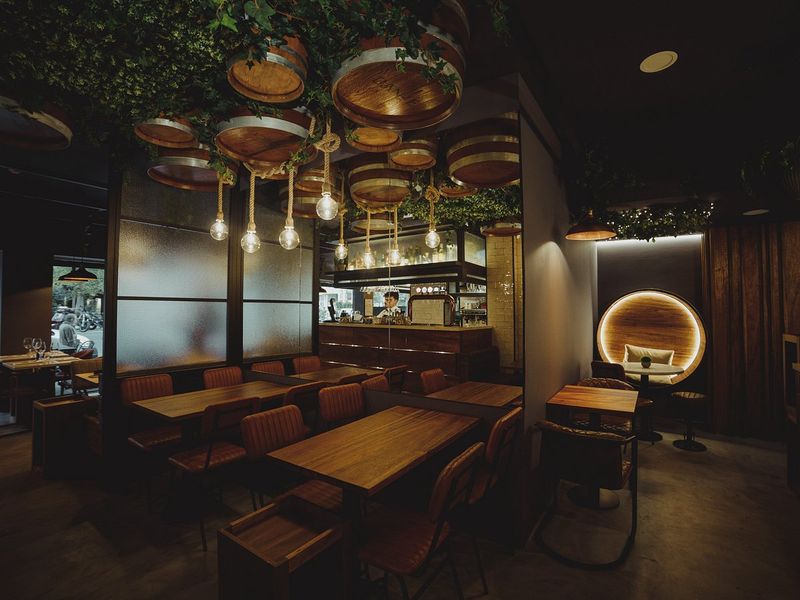
Political revolution brewed alongside strong coffee at this unassuming establishment near Portugal’s parliament building. Since 1840, journalists, politicians, and activists have plotted the nation’s future in heated discussions that sometimes changed history.
A Montanha maintains its traditional Portuguese character with simple décor and classic pastries. The café’s strategic location makes it popular with government workers and visiting dignitaries. Their bica (Portuguese espresso) and pastel de nata (custard tart) provide authentic flavors of old Lisbon.
